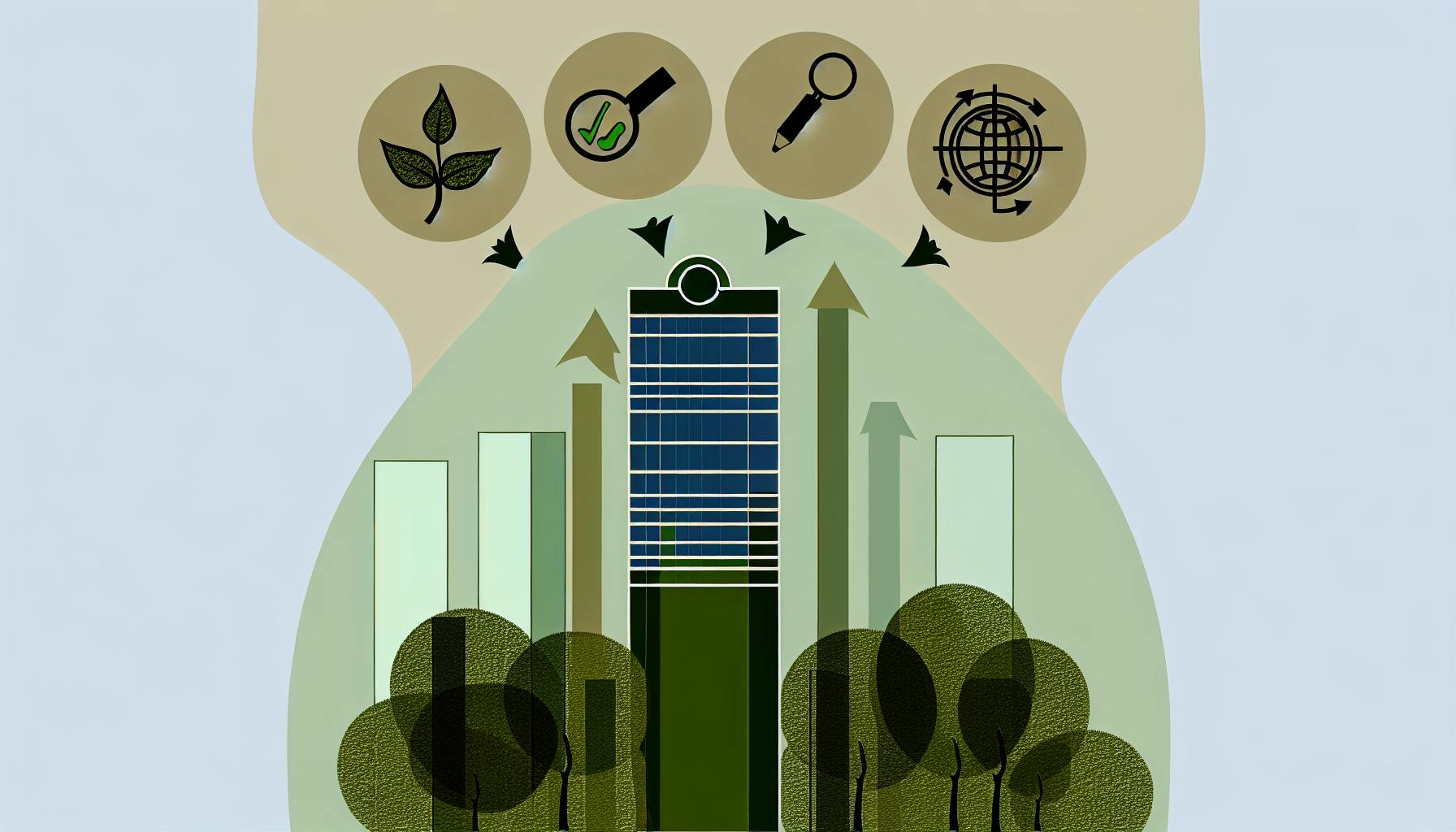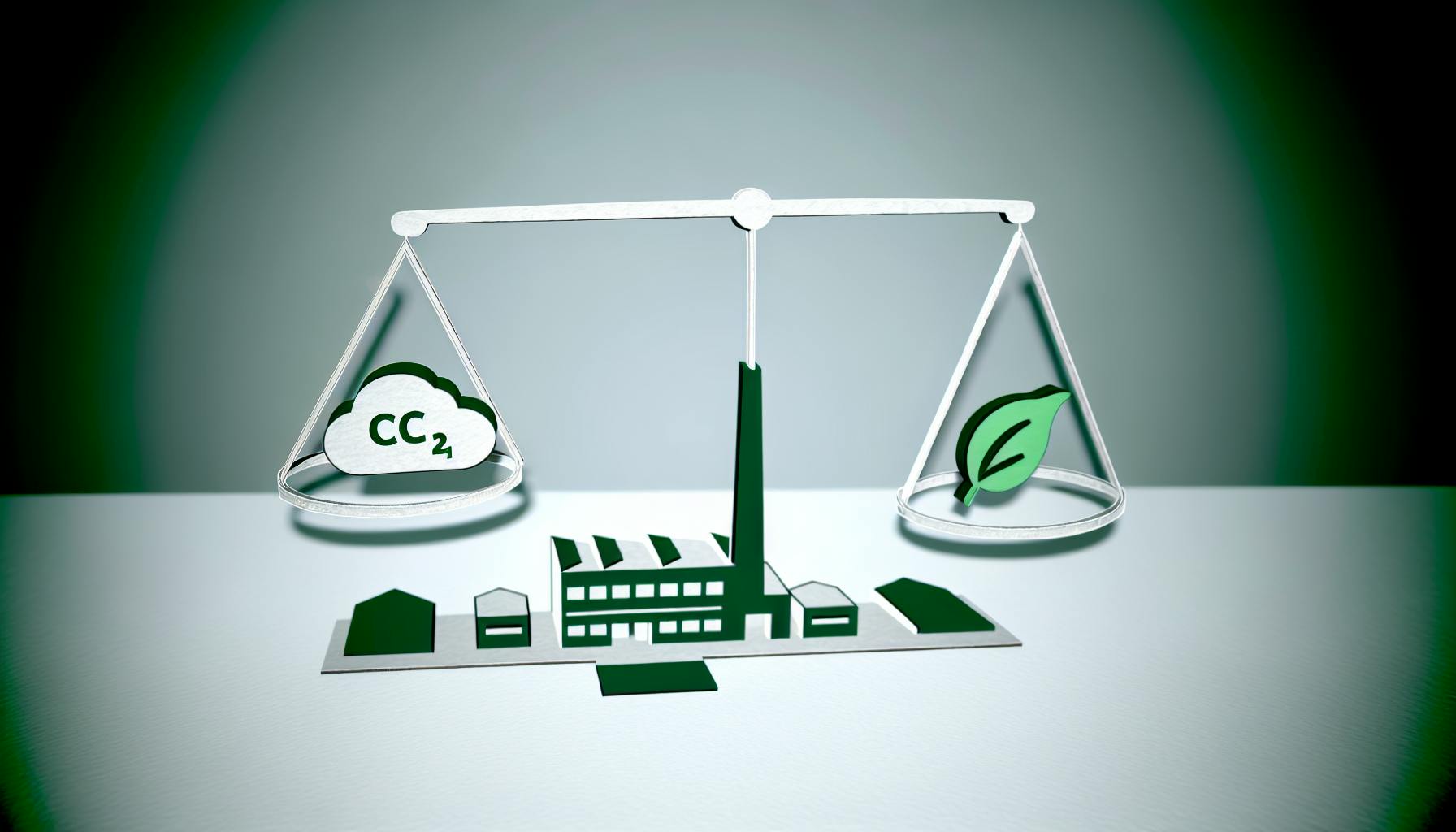The Corporate Sustainability Reporting Directive (CSRD) is an EU initiative expanding how companies report on their environmental impact, affecting about 50,000 entities including SMEs. Here's a quick guide to understand CSRD:
- Applies to: Large EU companies, listed SMEs, and others indirectly through supply chains.
- Key Components: Expands from the NFRD (Non-Financial Reporting Directive), introduces 'double materiality', ESRS (European Sustainability Reporting Standards) standards, digital reporting, and ties with EU Taxonomy & SFDR (Sustainable Finance Disclosure Regulation).
- For SMEs: Listed SMEs must comply by 2026, affecting others indirectly. Compliance depends on size, listing status, ownership, and consolidation rules.
- Getting Ready: Involves setting up a CSRD team, identifying material impacts, gathering data, and planning approaches.
- Indirect Impacts: Mandatory disclosures for partners and voluntary alignment can enhance competitiveness.
- Opportunities: Beyond compliance, CSRD offers chances for competitive differentiation, access to green financing, future-proofing, and efficiency gains.
CSRD is more than compliance; it's a step towards sustainable business practices, offering both challenges and opportunities for SMEs.
Transitioning from the NFRD (Non-Financial Reporting Directive)
The NFRD, which started in 2014, required big companies with more than 500 employees to share how they affect the environment and society. This applied to about 11,700 companies in the EU.
The CSRD goes further, asking around 50,000 companies, including all big companies and those listed on the stock market (except very small ones), to report. It also asks for more detailed and standard information.
Double Materiality
A new thing in the CSRD is 'double materiality.' This means companies need to look at:
- Financial materiality: How climate change can impact the company's money and operations.
- Environmental/social materiality: How the company affects the environment and people, like pollution or working conditions.
So, companies have to consider how they're affected by and affect the world around them.
Introducing the ESRS
To make sure everyone's reporting the same way, the CSRD introduces a set of standards called the European Sustainability Reporting Standards (ESRS). These include:
- ESRS 1: The main rules for reporting
- ESRS 2: More detailed rules about the company's strategy, governance, and impacts
- 10 other standards focusing on environmental, social, and governance issues
These standards help compare companies more easily.
Digital Reporting Format
Companies now have to report in a digital format (XHTML) instead of PDFs. This makes it easier to look through the data.
Connections with EU Taxonomy & SFDR
The CSRD works together with other EU rules like the EU Taxonomy and the Sustainable Finance Disclosure Regulation (SFDR). These all aim to make businesses more sustainable and transparent across Europe.
Determining CSRD Applicability for SMEs
The Corporate Sustainability Reporting Directive (CSRD) brings in new rules for more companies in the European Union to talk about their impact on the environment. But, not every small or medium-sized enterprise (SME) needs to follow these rules. Whether an SME has to report depends on how big it is, if it's listed on the stock market, who owns it, and if it's part of a bigger company.
Size Thresholds
Outside of the size thresholds listed above, designated public interest SMEs are also required to report under a more limited set of CSRD disclosures (ESRS LSME) from January 1, 2026. These standards apply to listed EU Member State companies who meet at least two of the three following criteria:
- Balance sheet totals of between EUR 4 and 20 million
- Sales of more than EUR 8 million and less than EUR 20 million
- Between 50 and 250 employees
If an SME is smaller than these limits, it doesn't need to worry about CSRD for now.
Public Listing Status
SMEs that are listed on the stock market in the EU have to follow CSRD rules, even if they are small.
But, these listed SMEs have a choice to wait two more years until 2029 to start reporting if they explain why it's hard for them to get the needed information.
Ownership Structure
If a small company is owned by a bigger company that has to follow CSRD, then the small company might have to report too. This is also true if an SME owns part of a company from outside the EU.
Consolidation Rules
Sometimes, companies that are connected or owned by the same parent company report together. If an SME is part of a bigger company's group that needs to report under CSRD, then the SME has to include its information in the big company's report.
Step-by-Step: Getting Ready for CSRD
Now is the time for SMEs to start getting things in order. Here's a simple guide to make sure your company is ready:
Setting Up a CSRD Team
- Pick people from different parts of your company, like the team that buys stuff, the folks who handle employees, and others, to lead this effort.
- Ensure everyone knows what they need to do, like gathering information, keeping track of important numbers, and putting together reports.
- Think about giving your team a crash course on how to be more eco-friendly.
Figuring Out What Matters Most
- Find out what big impacts your company has on things like the environment, society, and how it's run.
- Decide which issues are most important to tackle in your eco-friendly plans and reports.
- Talk to people who care about your company, like investors, customers, and the community around you.
Getting Your Data Together
- Start using tech tools to collect and keep an eye on the information you need for CSRD.
- Make these tools work with the data you already have.
- Make sure you're correctly figuring out all types of emissions your company is responsible for.
Planning Your Approach
- Look at where you stand compared to what CSRD asks for and find out where you're falling short.
- Plan out how you'll get better at this over a few years.
- Choose solid goals and ways to check your progress.
Asking for Help When You Need It
- Think about getting advice from experts in being eco-friendly.
- Check out software that can make following CSRD rules easier.
- Join groups with other businesses to share tips and experiences.
The Ripple Effect: CSRD's Indirect Impacts
Mandatory Disclosure Requests
Big companies and some smaller ones that are listed have to share a lot of info about how they impact the environment. This includes looking at the effects of their whole network, including the smaller companies they work with. So, even if a small company isn't directly covered by these new rules, they might still have to give up environmental info to their bigger partners.
This means more work for these small companies, but staying on top of it keeps their relationships with big companies smooth. If they don't, the big companies might have to stop working with them to meet their own reporting needs, which could be a hassle.
Voluntary Alignment for Competitiveness
Even if small companies don't have to share sustainability information by law, doing so can still be a good move. People are caring more about buying from companies that are kind to the planet, so showing that you care can attract more customers and investors.
Using known reporting methods can also make a small company seem more trustworthy. Plus, keeping track of how you're doing on environmental progress can help find ways to save money and avoid future rules that could cause problems.
In the end, sharing info about how you're helping the planet can make a small company stronger and more competitive. It looks like being open and responsible about environmental issues is becoming important for all businesses, big or small.
sbb-itb-0f1f828
Turning Requirements into Opportunities
Making the most of CSRD rules can actually help small and medium-sized businesses stand out, grow efficiently, save money, and work smarter. Let's look at how doing good for the planet can also be good for business.
Competitive Differentiation
- By reporting on CSRD, small businesses can show they care about the environment. This makes them more appealing to investors, customers, and people looking for jobs who value green practices.
- Being known as a planet-conscious or ethical brand can attract more customers, as more people want to buy from businesses that don't harm the planet.
- Starting early with these green steps can give businesses an edge, making them stand out by including eco-friendliness in what they offer.
Access to Green Financing
- Showing you're doing your part for the planet can help get loans and investments that support green projects.
- With new rules pushing money towards eco-friendly businesses, reporting on your green efforts can help you get a piece of that pie.
- Investors looking to make a positive impact with their money might find these businesses more attractive.
Future-Proofing & Increased Resilience
- By identifying and sharing information about how climate change could affect them, businesses can prepare better for the future.
- Taking steps to reduce harm to the environment and diversifying how they get their materials can make businesses more stable and ready for unexpected changes.
- Keeping up with CSRD helps businesses stay ahead of trends that focus on being kind to the planet.
Cost Savings & Efficiency Gains
- Looking closely at how they operate can help businesses find ways to use less, waste less, and save money.
- Finding smarter ways to work and using less can lead to big savings.
- Making changes to meet CSRD standards can spark new ideas and ways of doing things that set a business apart and add value.
By getting on board with CSRD, businesses can turn a must-do into a plus. It's not just about avoiding trouble or getting green investments; it's also about building a stronger brand, finding smarter ways to work, staying ready for the future, and doing good for the planet.
Conclusion: Making Business More Sustainable
The Corporate Sustainability Reporting Directive (CSRD) is a big step for businesses, big and small, towards becoming more sustainable. While it's mainly for large companies and SMEs that are listed on stock exchanges, its impact goes beyond just those companies. The CSRD is about more than just following rules; it's a chance to grow, become more efficient, and stand out from the competition.
Key Takeaways
- The CSRD asks for clear and detailed reports on how businesses affect the environment from about 50,000 companies in the EU.
- SMEs that are listed on stock markets need to follow these rules if they're big enough. But, even if an SME doesn't have to report, it's still a good idea because of how they work with larger companies.
- Getting ready for what people and other companies expect in terms of sharing environmental information can protect SMEs for the future. It can also make them look good, help them get money for green projects, make them stronger, and save them money.
- Big companies that work with smaller suppliers should help them get better at being sustainable instead of cutting them off.
- SMEs that choose to share their sustainability efforts can attract people and investors who care about the environment, giving them an advantage.
The Path Ahead
- Look at how your business and the companies you work with affect the environment and society, using the CSRD as a guide.
- Make a plan on how to deal with the most important environmental and social issues for your business and the people interested in it.
- Keep track of the important data in a way that's easy to understand, using technology to help.
- Don't be shy about asking for advice from experts or other businesses on how to meet these new requirements.
- Keep improving your methods as things change, using what you learn to make your business more adaptable.
For SMEs, dealing with the CSRD might look tough, but it doesn't have to be a hassle. By taking steps towards being more open and caring for the environment, businesses can use this directive to speed up their move towards being more sustainable. Getting ahead now can open up new chances for investment, make businesses run better, help them stand out, and prepare them for the future. It's time to get going.
Related Questions
Does CSRD apply to SMEs?
If you run a small or medium-sized business that's listed, you'll need to start sharing details about your company's impact on the environment starting in 2026. If your business isn't listed, you don't have to share this info, but you can if you want to. All the details you share need to be in a specific digital format and checked by an auditor.
Which companies have to comply with CSRD?
The CSRD rules apply to a wide range of businesses, including:
- Big companies in the EU
- Most businesses that work in Europe or have their shares traded there, including smaller ones, though there are some exceptions
- Small- and medium-sized businesses that are listed
What are the basics of CSRD?
The Corporate Sustainability Reporting Directive (CSRD) is a set of rules from the EU. It says that companies have to tell everyone about how they're affecting the environment and society, and how they're managed, using a specific set of reporting standards. The goal is to make companies more open and responsible about their impact.
What are the pillars of CSRD?
The CSRD focuses on making companies share more about:
- How they affect the environment
- Their impact on people and society
- How they are governed or managed
Companies will need to give a lot of details on these three areas under the new rules.



